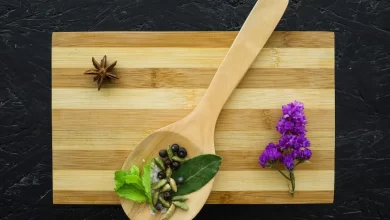Monkey Fruit: A Nutritional Marvel with Number of Health Benefits

Meet the mesmerizing Artocarpus lacucha, known as Monkey Fruit or Monkey Jack fruit, a majestic tropical evergreen tree species belonging to the esteemed Moraceae family. It proudly stands tall, capturing hearts with its enchanting allure. Thriving across the Indian Subcontinent and Southeast Asia, its mesmerizing presence graces numerous Asian countries, including Bangladesh, Bhutan, Nepal, Myanmar, Sri Lanka, Thailand, Malaysia, Singapore, Vietnam, Cambodia, and Laos.
This magnificent tree is cherished for its precious wood, while its delectable fruit has earned fame for its edibility and purported medicinal properties. Among the various common names bestowed upon it, we find Monkey jack, Monkey jack tree, Monkey fruit, and Monkey jack fruit. The genesis of its generic name lies in the Greek words ‘artos,’ signifying bread, and ‘karpos,’ symbolizing fruit, while the species name draws inspiration from its common moniker in India.
The fruits borne by Artocarpus lacucha boast exceptional nutritional content, making them a vital component of the human diet. They abound in essential vitamins, with vitamin C and beta-carotene taking center stage as outstanding sources of antioxidants. These remarkable attributes further underscore the significance of this marvelous fruit as it continues to captivate both taste buds and health-conscious individuals alike.
Table of Contents
Botanical Insight
Standing as a medium to large deciduous tree, Artocarpus lacucha reaches heights of 10-15 meters. Found flourishing in lowland hill forests, open landscapes, and villages, the tree thrives at altitudes up to 300 meters. It prefers deep, well-drained soils with ample moisture supply. The bark exhibits a captivating grey hue, and when slashed, a deep red hue emerges, accompanied by milky latex. Branchlets, adorned with stiff, pale brown to yellow velvety hairs, boast a thickness of 3-6 millimeters. This remarkable tree holds significance, even in ancient Indian literature, as it is mentioned in the Arthashastra, a revered text that explores statecraft, economic policy, and military strategy.
Foliage Overview: A Closer Look at the Leaves
The leaves of Artocarpus lacucha are large and alternate, measuring approximately 25-30 centimeters in length and 15-20 centimeters in width. Some leaves may exhibit pinnately lobed characteristics, while the base presents a distinctive wedge-shaped form with a blunt tip. The leaf margin is either entirely smooth or adorned with minute teeth.
Blossoms and Bountiful Fruits
Artocarpus lacucha flowers manifest in separate spherical heads on the same tree, displaying distinct unisexual characteristics – male flowers feature a delightful yellow-orange hue, while the female flowers embrace a captivating reddish appearance. These flowers mature into syncarps, where the entire female inflorescence forms a fascinating fruit. Typically irregular or nearly round, the fruits range from 2 to 5 inches in width and showcase vibrant green to dull yellow colors.
Upon ripening, they don a pinkish-brownish yellow tinge and yield a sweet-sour pulp. While some relish the fruit raw, it is more commonly used to prepare curries or chutneys. The fruit varies in size, with a typical diameter of 5-10 centimeters, weighing between 200-350 grams. Inside, one may find 10-30 seeds per fruit, which are irregular and diverse in size, much like the fruits. Upon maturity, the seeds measure about one centimeter in length, boasting a flattened shape and a pointed embryo end, while their thin, white seed coat contains sticky white latex.
Monkey Fruit Quick Facts: Unveiling the Marvels of Artocarpus lacucha
- Name: Monkey Fruit
- Scientific Name: Artocarpus lacucha
- Origin: Indian subcontinent and SE Asia
- Colors: Ranging from vibrant green to a dull yellow, finally settling on a delightful pinkish brownish yellow tinge when fully ripe.
- Shapes: The fruit takes the form of a syncarp, typically nearly round or irregular, spanning 2 to 5 inches in width.
- Flesh Colors: Boasting a captivating vibrant orange-pink hue.
- Taste: Savour the enchanting blend of sweetness, sourness, and tanginess with delightful citrusy overtones.
- Health Benefits: Embrace a wealth of health benefits as this remarkable fruit aids in preventing various diseases, including cancer, diabetes, neurodegenerative ailments, and coronary heart diseases.
Medicinal and Nutritional Values
Scientists and Ayurvedic physicians are intrigued by this magical fruit, exploring its potential uses. Studies show that consuming Monkey fruit can prevent diseases like cancer, diabetes, neurodegenerative issues, and heart problems. Its properties, including anti-inflammatory, antibacterial, antioxidant, and cytotoxic traits, make it a valuable therapeutic ingredient in Ayurvedic medicines.
The lakucha or monkey jack fruit boasts a unique flavor unmatched by other fruits, combining sweetness, tanginess, and sourness. It aids in treating skin problems and is a rich source of minerals, vitamins, polyphenols, and fibers, offering numerous health benefits when consumed in moderation.
The Health Advantages of Monkey Fruit Consumption
The lakucha fruit has many health benefits. It refreshes the liver and helps with digestion. The bark and seeds are used to treat liver and stomach problems. It also reduces inflammation and is great for the skin, making it look younger and brighter.
Lakucha is also good for hair. It helps prevent hair loss and promotes hair regrowth, making hair stronger. It is also used to treat skin diseases and dark spots, giving the skin a natural glow. Lakucha is effective in treating dysentery, arthritis, and wounds.
This fruit is not only nutritious but also has medicinal properties. To get the best results, it should be consumed in the right amounts to treat various diseases effectively.
Monkey Fruit Traditional Uses and Medicinal Benefits
- Traditional Uses and Medicinal Benefits: Extracts of Monkey Fruit serve as a valuable resource in traditional medicine. The fruit extract aids in reducing hair loss and promoting hair growth. It also proves helpful in treating skin diseases, fading darkened skin, and addressing issues like arthritic swelling, dysentery, and wounds.
- Beneficial for Internal Health: Within the Monkey Fruit lies an array of remedies for internal health. The fruit’s pulp serves as a refreshing tonic for the liver, while the seeds and latex act as gentle purgatives. The bark, containing 8.5% tannin, effectively treats skin lesions, and its powder aids in healing wounds and abscesses.
- Supportive for Digestive Issues: Monkey Fruit exhibits versatile properties to address stomach and liver issues. Both seeds and bark play a role in aiding digestion, while the ripe fruit serves as a tonic for the liver. Furthermore, the fruit’s juice and seeds act as purgatives, and the bark possesses astringent properties.
- Skin-Enhancing Properties: When it comes to skincare, Monkey Fruit has much to offer. The root serves as a refreshing agent, while the leaves treat dropsy. Additionally, the heartwood extract proves effective for skin-whitening, while the bark’s saturated extract serves as a poultice for skin ailments.
- Traditional Therapeutic Uses: Monkey Fruit’s presence in traditional Thai medicine is notable. It plays a crucial role in combating inflammation and acting as an anti-aging agent. Moreover, the extract proves effective in treating taeniasis, a condition caused by tapeworms.
- Widely Used in India: The Monkey Fruit holds a significant place in Indian traditional medicine. Its extracts are widely employed for treating specific diseases, and the dried aqueous extract is effective in addressing tape worms.
- Diverse Culinary Applications: Beyond its medicinal benefits, Monkey Fruit boasts diverse culinary applications. Enjoyed fresh or used in curries, this fruit offers delightful flavors. The unripe fruit and male flowers make their way into curries, pickles, and sauces, while various tree parts are savored when eaten raw, boiled, steamed, or roasted.
- Edible and Nutritious: Monkey Fruit’s broad, flat seeds are edible and nutritious, adding to its culinary appeal. Additionally, the fruit’s bark contains tannin, which is chewed as a substitute for betel nut, offering unique cultural significance.
Versatile Uses of Monkey Fruit
- Uses of Monkey Fruit: Monkey Fruit serves as a versatile resource with various applications. Its fruits and male flowers can be enjoyed raw, boiled, steamed, or roasted, making them a delightful culinary choice. Additionally, in Nepal, it is highly valued as fodder, providing 60-200 kg of fresh fodder per tree annually for lactating animals due to its 16% crude protein content.
- Fuel and Timber Source: Monkey Fruit trees play an essential role as a local source of fuel. They provide firewood for cooking and heating purposes, making them valuable in communities. Moreover, their hard, termite-resistant timber is widely used in construction, furniture, boats, and other applications.
- Latex and Dyestuff Rich Bark: The Monkey Fruit is abundant in sticky latex found in all parts of the tree, offering various uses. Additionally, the bark contains 8-9% tannin and is chewed similarly to betel nut. Furthermore, both the wood and roots yield rich color dye, adding to its significance.
- Nutritious Seed Fat: Monkey Fruit’s seeds contain nutritious fat, appearing as a light yellow, viscous liquid at room temperature. This quality enhances its value as a potential food supplement and nourishing resource.
- Medicinal Properties: Beyond its culinary and resourceful applications, Monkey Fruit exhibits medicinal properties. Its root acts as an astringent and purgative, beneficial for addressing various health concerns. Moreover, when macerated, it serves as a poultice for treating skin ailments, while the bark proves effective against headaches.
- Shade, Shelter, and Soil Enhancement: Monkey Fruit trees provide beneficial shade, creating a cooler microclimate for humans, plants, and animals beneath their canopy. Furthermore, they contribute to soil improvement by offering mulch, supporting a healthier environment.
- Occasional Ornamental and Protective Growth: In certain settings, the Monkey Fruit is cultivated for decorative purposes as an ornamental bonsai plant, adding beauty to spaces. Additionally, its presence serves as a protective measure, guarding against potential risks.
- Interesting Fruit’s Latex: A unique characteristic of the Monkey Fruit is its latex, similar in texture to a jackfruit’s. When the fruit’s skin is cut, white latex is exuded, adding to its intriguing qualities.
- Versatile Fiber for Cordage: Monkey Fruit’s inner bark contains versatile fiber, suitable for making cordage, showcasing its multi-faceted uses.
- Colorful Dye from Wood and Roots: An interesting aspect of Monkey Fruit is its ability to produce yellow coloring matter from both wood and roots, serving as a natural dye for textiles.
- Abundant Feedstuff Production: A mature Monkey Fruit tree yields a substantial amount of fresh feedstuff, making it a valuable resource for feeding livestock and supporting agricultural practices.
- Diverse and Local Fuel Source: Beyond its wood’s versatile applications, Monkey Fruit plays an essential role as a local fuel source, meeting various energy needs.
Conclusion
The Artocarpus lacucha, a majestic member of the Moraceae family, captivates with its enchanting Monkey Fruit. From its resplendent flowers to its nutritious, antioxidant-rich fruit, this tree stands as a testament to the botanical wonders of the Indian Subcontinent and Southeast Asia. As we continue to delve into the plant’s traditional uses and medicinal benefits, let us appreciate the myriad ways this treasure enriches and nourishes both body and soul.
References:
- https://en.wikipedia.org/wiki/Artocarpus_lacucha
- https://www.growables.org/information/TropicalFruit/Lakoocha.htm
- https://npgsweb.ars-grin.gov/gringlobal/taxonomydetail.aspx?id=409385
- http://www.bgci.org/plant_details.php?plantID=70364
- https://davesgarden.com/guides/pf/go/154422/
- http://www.wikiwand.com/en/Artocarpus_lacucha
- http://www.theplantlist.org/tpl1.1/record/kew-2654005
- https://www.athayurdhamah.com/about-ayurveda/lakucha
- https://ipfs.io/ipfs/QmXoypizjW3WknFiJnKLwHCnL72vedxjQkDDP1mXWo6uco/wiki/Artocarpus_lacucha.html
- https://www.researchgate.net/publication/290438301_Nutritional_value_and_medicinal_uses_of_Monkey_Jack_fruit_Artocarpus_lakoocha
Disclaimer:
This article is only written for basic and general informational purposes only. The Statements contained here have not been evaluated by the FDA and neither the efficacy of these products has been confirmed by FDA-approved research. All information presented here is not meant as a substitute for or alternative to information from health care practitioners.
There’s no guarantee of specific results and the results can vary. Users must not view the content as medical advice in any way. Users are also required to ’NOT SELF-MEDICATE’ and always consult their health care professional before taking any medicines or undergoing any treatment. DivyaAyushCare and the author will not be responsible for any act or omission by the User arising from the User’s interpretation of the content.
Read More:
- Organic Food – Are They Nutritious Than Engineered Produce?
- Breakfast: The essence and needs for the Body Immunity
- Be Healthy with Herbal Tea
- Arthritis Treatment in Ayurveda
- Conquering Asthenia: Regaining Energy and Vitality
- Unwind and Relax: Find Peaceful Sleep with Jason Stephenson Sleep Meditation
- Essential Oils & Chakras: Balancing Energy Centers Naturally
- Revitalize Your Senses with Lemon Verbena Essential Oil
- Unlock Inner Peace with Transcendental Meditation Mantras




